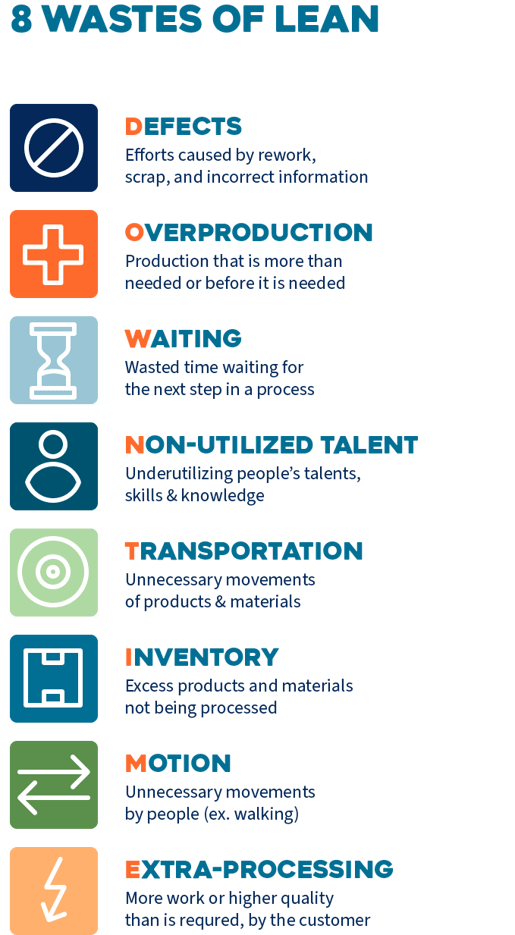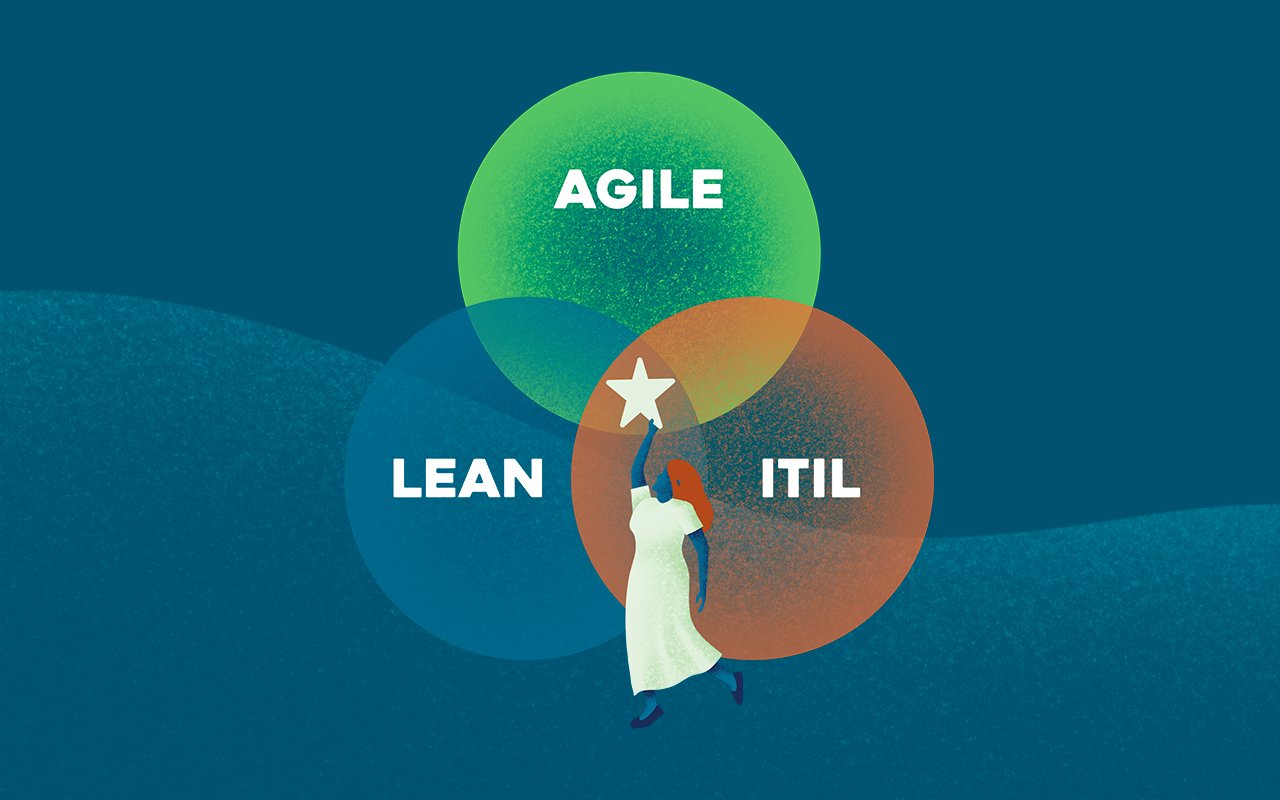Agile, Lean, ITIL – all of these terms have one thing in common: they facilitate IT service desk coordination, communication, and success. But, while these frameworks and ideologies share a few traits in common, it’s important to understand each term individually so that you can put them to work together.
Overview of Agile
Agile is a buzzword gaining a lot of traction in recent years for its role in helping teams stay on track during Covid-19 disruptions.
The Agile methodology is a philosophy, more than a set of guidelines for your work. These principles don’t necessarily tell you how to complete specific tasks. Agile is a mindset that fosters flexibility and adaptability, which operates under the assumption that things can, and likely will, change and you must be ready and able to handle that change.
This started in 2001 in DevOps with the Agile Manifesto, which is comprised of the following four values:
- Individuals and interactions over processes and tools
- Working software over comprehensive documentation
- Customer collaboration over contract negotiation
- Responding to change over following a plan
This evolved into the 12 principles behind the Agile manifesto. Although Agile has roots in IT, it has expanded to a variety of business units.
ITIL Refresher
The IT Infrastructure Library, ITIL, is defined by Axelos as:
“A set of best-practice publications for IT service management. ITIL gives guidance on the provision of quality IT services and the processes, functions and other capabilities needed to support them.”
ITIL describes best practices, processes, procedures, tasks, and checklists which are not specific to any singular organization or technology. These practices can be applied to knowledge management strategies and can be used with ITSM software.
In short: ITIL provides a framework that can effectively organize service management processes both inside the service desk and beyond into the enterprise. ITIL has undergone an evolution, with the recent change from ITIL v3/2011 to ITIL 4, which you can read more about here.
History of ITIL and Agile Together
Before we move forward discussing the concept of “Lean” you may find it useful to know a bit more about the ways in which ITIL and Agile complement one another. Previously, ITIL and Agile were nearly conflicting ideologies, but with the recent updates in ITIL 4, the two have become more synergistic.
As service management shifted toward the Agile methodology, ITIL followed the trend. The focus of ITIL 4 shifted to value delivery, making it a better companion to Agile methodologies. Suddenly, it is no longer ITIL vs. Agile but ITIL WITH Agile. For example, Agile emphasizes shortening and strengthening feedback loops, and in ITIL 4 this is a key requirement in the Service Value System (SVS).
You can read more about the specific changes that make Agile so compatible with ITIL 4 in this blog post, but the main takeaway is that ITIL 4 and Agile both urge teams to evaluate and create value for the customer as much as possible.
H2: What is Lean ITIL/IT?
Defined by Wikipedia:
“Lean IT is the extension of Lean manufacturing and Lean services principles to the development and management of information technology (IT) products and services. Its central concern, applied in the context of IT, is the elimination of waste, where waste is work that adds no value to a product or service.”
In other words, Lean IT is exactly as it sounds – striving for continual improvement and greater customer value while simultaneously eliminating waste. An example of Lean in action is through the use of automation to elimination repetitive tasks to shift-left through self-service (meaning that you move Level-1 tickets to self-service, shifting Level-2 to Level-1 support and so on).
To break down this concept a little bit further, there are 8 wastes of Lean, which, when combined, create the acronym “Downtime”:

It’s important to note: going Lean doesn’t necessarily mean cutting people – it’s more like cutting wasteful or overly cumbersome processes that don’t add any value, as well as taking a look at all of the methods available to your team to optimize time and therefore costs.
How do Lean, ITIL, and Agile Work Together?
Together, the combination of Lean, ITIL, and Agile work together like a puzzle to achieve a few things.
ITIL provides the framework and organized processes, while Lean reminds team members to reduce waste (for IT, this is in the form of time and non-utilized talent) and Agile helps team members to work more quickly and adapt to change.
For example, think of an IT service desk working to handle ticket pileups due to Covid. They likely are using incident management through ITIL v3/2011 or ITIL 4, which keeps teams working through tickets in the same way. But, when they add in Lean, it might look like the team reducing downtime by re-prioritizing tickets. Add in a bit of Agile and the tickets might be routed to people outside of the IT service desk who are equipped to handle specific types of issues, or it might look like a group tackling problems and implementing feedback loops.
Individually, these methodologies work to streamline support and service delivery, but combined they can boost it to the next level. It should be noted, that you don’t necessarily need all three to be successful, but you can find success within the combination.
Benefits of Lean, ITIL, and Agile
All of this sounds great, but in your business, there is no room to try combining methodologies that might not work together for your specific goals. So, what’s in it for you?
Together, Lean, ITIL, and Agile offer:
- Faster resolution of issues
- Improved productivity for agents
- A better overall customer experience
- Reduction in wasted time and ultimately, money
Let’s think of these three methods together in a practical example where these benefits can be realized. Imagine that you’re in the financial industry – perhaps a bank or a credit union – and your IT service desk is responsible for making sure that customers can access their money and employees can do their jobs. That’s a lot of pressure! Now imagine that users can’t access their online banking, which is causing a slew of overdrafts and late fees due to lack of availability of online bill pay.
If your team is relying solely on ITIL, they might be held back as they work to resolve incidents through traditional incident management processes. But, through the combination of the Agile methodology, which encourages multiple people to work on the project with constant feedback loops, and Lean IT, which pushes the use of self-service and slimmed down processes, you can expect the problem to be solved much more quickly without wasting time or money finding the fix. That means your customers can access their funds, improving their experience, and your employees aren’t left scrambling to handle disgruntled customers and find their own workarounds.
How to Implement Lean, ITIL, and Agile Synergies
These benefits seem great, but how do you get your team to implement this cocktail of strategies? The following tips can help:
Change the Culture of the Service Desk
The first and most important step in implementing any new strategy is to change the mindset of the agents and team members who will be responsible for executing that strategy. To start, when emphasizing Lean and Agile methodologies especially, there might be an underlying fear that this will mean team members will be laid off. It’s actually the contrary – the service desk agents are necessary, especially when it comes to being Agile, and this fear should be addressed.
Once you’ve addressed the fears, you can begin the mindset shift. As part of this shift, you may need to focus on retraining your team on swarming, scrum, and other Agile techniques, while encouraging them to sign up for courses or webinars on the topic to help them in their careers.
Remember, implementing any new technique shouldn’t be a “wild west” approach – there still needs to be processes and organization. But it should be clear what’s being put into place, and that whatever methodology you choose to implement are part of a push to improve efficiency and create more opportunity for individual employees as well as the team as a whole.
Implement Agile, Lean, and ITIL in the Service Desk AND DevOps Teams
When you implement any combination of these three methodologies, it shouldn’t end at the service desk. It should extend to all of the IT department, including DevOps teams.
Studies repeatedly show that Agile is worth it beyond just the service desk. For example, one study found that 93% of business units that had fully adopted an Agile model before the pandemic performed better than those who hadn’t post-pandemic. Lean can also greatly benefit teams in a similar way, helping streamline processes (especially when value stream mapping). And it’s no surprise that ITIL can create a more efficient workforce by providing necessary framework for important things like incident and problem management or change enablement.
Rather than keeping these methodologies in the IT service desk alone, expanding them to DevOps teams and even beyond IT to other business units can help you realize the greatest benefits and results.
“Trim the fat” Regarding Processes, Not People
Going Agile and Lean, all within the framework of ITIL, requires you to “trim the fat” so to speak. This can be facilitated with self-service technology that creates a shift-left.
The goal, as mentioned earlier, is not to eliminate employees. The goal is to free them up to handle the more complicated incidents and problems. The best way to do that is to enable customers to solve their own problems where possible.
You’ll also find greater success when you go beyond shift-left into self-healing capabilities. This proactive approach to service management, combined with greater observability through remote monitoring, can help you trim waste through the use of technology.
Use ITSM to Combine These Frameworks
We mentioned earlier how to implement these strategies on a practical level, but when using multiple frameworks or ideologies, it’s important to find an organized system to tie these all together. You can do this through the use of an IT service management tool. To learn more about EasyVista’s ITSM solution, click here.





